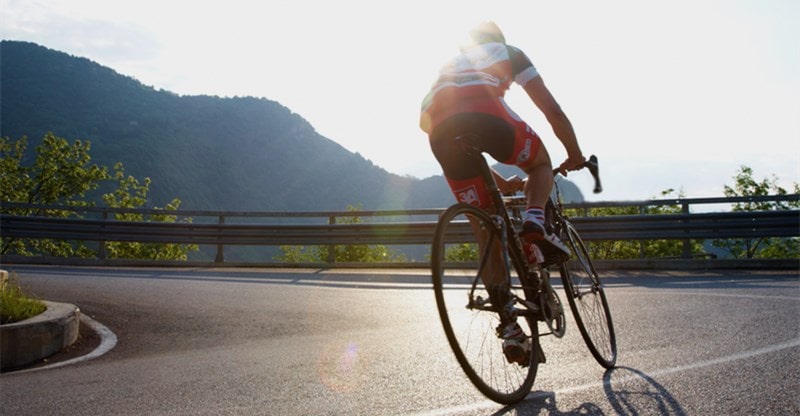Top Tips For Safe City Cycling
Statistics show that the number of cyclists across America is on the rise, with young adults, in particular, taking up a large percentage of the US cycling market. What’s more, many cities across the country have introduced bike-share programs, offering an eco-friendly, efficient way for locals and visitors to get around, and new bike safety gear is being developed all the time too.
Thanks to all of this, in many ways, there’s never been a better time to hop on a bike and pedal your way around town. It’s good for the world around you, great for your body in terms of toning muscle and burning calories, and highly convenient in many cases too, with bikes letting you make short-distance trips quite quickly, especially when compared to walking or relying on public transport.
At the same time, city cycling comes with its fair share of risks. Trying to stay safe on a bike can be tricky with so many cars all around you, and the high traffic rates in big cities can lead to drivers getting angry, making mistakes, or not noticing a cyclist rolling up alongside them.
Reports from the NHTSA show that bicycle accidents and fatalities are much more likely to occur in urban areas, so it’s absolutely vital for city cyclists to protect themselves. Here are some tips to help!
Always Be Aware
This one should go without saying, but it’s absolutely worth repeating again and again, especially for younger and more inexperienced cyclists hitting the city streets. You need to remain alert, aware, and observant at all times in order to protect yourself and others while cycling. You can’t control what other riders and drivers do, but you can control your own actions and take a large part of your safety into your own hands.
Accidents can happen at any moment, and a second of lost focus could lead to a disaster, which is why it pays off to keep your eyes and ears open at all times, looking left and right to be aware of vehicles and hazards around you, adjusting to changing weather, and taking action to keep yourself safe. Bicycle accidents often happen at stop signs, so you really can’t let up for a single second.
Wear Protective Gear
A helmet should be regarded as the absolute bare minimum when it comes to cycling safety gear. Helmets can reduce your chances of suffering a head injury on your bike by about 50%, drastically improving your odds of making it out of an accident or collision without serious damage, and well over 50% of all cyclists killed each year are not wearing helmets at the time.
There’s plenty of other cycling safety gear you can choose to use too. Visors can help to improve your visibility levels and protect your eyes from the sun’s glare or wind rushing by, while gloves can help to reduce the risk of cuts and grazes on your hands if you fall from the bike. Do your research and invest in safety gear to minimize your odds of getting hurt.
Obey The Rules
Sometimes, cyclists can be under the impression that the regular traffic rules don’t quite apply to them, but if you’re on the road, you need to follow the same road rules as everyone else. This means obeying traffic lights, stopping at stop signs, never cycling on the pavement unless a sign states otherwise, etc.
Defying any one of these rules not only endangers yourself, but others too, including pedestrians, other riders, and drivers who may not be expecting you to suddenly dart out at a stop sign or ignore a set of lights. This also ties into the importance of being aware, observing your environment, and responding to the road around you.
Drive Defensively
Unfortunately, one thing that cyclists simply have to accept while riding on the roads is that some people out there won’t give the same respect or attention as they would to cars or vans. In their eyes, you’re a much smaller presence, so they may not even see you, or they might think it’s not too bad to drive up close to you or overtake you.
This is how so many accidents involving bikes occur, and even though it may seem unfair, it’s often up to the cyclist to try and take defensive action. This involves making your presence known, avoiding cycling in car blind spots, making sure you can see drivers in their mirrors, watching out for parked cars on the sides of the road as people may open their doors into you, and avoiding cycling too close to the kerb.
Keep Your Bike In Check
Another essential tip for smart, sensible cycling in cities is to make sure your bike is in top condition at all times. Too often, cyclists take to the roads on bikes with low-pressure tires or other little issues that might not seem so serious at first glance but could have a major impact on your cycling performance out on the road.
Riding a poorly-maintained bike or relying on an old bike that no longer fits you quite right can lead to disastrous consequences. Be sure to practice good bike maintenance in your downtime in between rides. This includes checking tire pressure, ensuring that the pedals are moving smoothly, knowing that your brakes work properly, and applying any lubricant in areas where it may be needed.
Conclusion
Riding your bike in the city is a really effective and useful way to get around, so there’s nothing wrong with giving it a try, but you have to do what you can to stay safe on each and every ride.
As stated earlier on, there are many situations where drivers or pedestrians may make mistakes or carelessly put you in a dangerous situation, forced to act fast to protect yourself, but by wearing protective equipment, driving defensively, and keeping an eye on your surroundings, you’ll put yourself in the best position to avoid any accidents.



